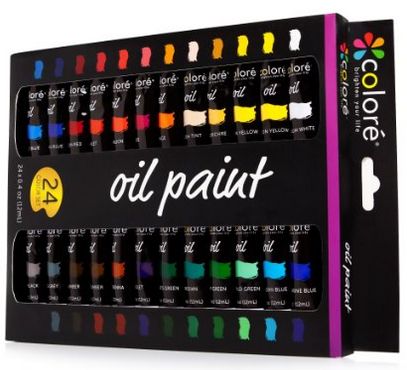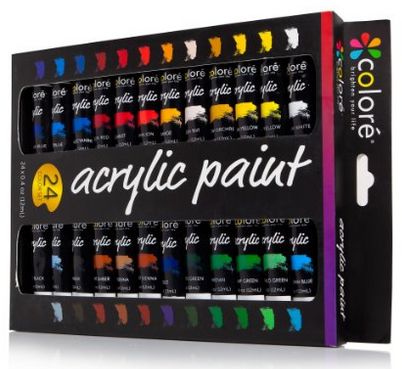Paintbrushes
There’s a dizzying assortment of brushes to pick from and also it is a a few preference as to which of them to purchase. Synthetic brushes are better for acrylic paints and Cryla brushes are perfect quality. Again, preferable to get a few good quality brushes than the usual whole load of cheap ones that shed many of their bristles onto the canvas. With that said some fairly cheap hog hair brushes are ideal for applying texture paste and scumbling.

The biggest guideline when working with acrylics is not to allow the paint to dry on your own brushes. Once dry they’re solid even though soaking them in methylated spirit overnight softens them a bit, they usually lose their shape and also you end up chucking them out.
It is suggested that portrait artists invest in a water container that permits the artist unwind the brushes on a ledge so the bristles are submerged in the water minus the bristles being squashed. The artist then uses a rag or possibly a little bit of kitchen towel handy to take away any excess water while i next wish to use that brush again. This saves having to thoroughly rinse each brush after each use.
Brush techniques
Brushes must be damp and not wet if you are using the paint quite thickly since the paint’s own consistency may have enough flow. You can definitely you are attempting to use a watercolour technique in that case your paint ought to be mixed with a good amount of water.
Utilize a lpaint brushes and then for better work work with a thinner brush with a point. Contain the brush nearer to the bristles for increased accuracy or out-of-the-way if you would like more freedom with all the stroke. Start your portraits by holding a big brush halfway approximately quickly provide the background a color. Artists really should not be so concerned about mixing the actual colour as they possibly can often mix colours on the canvas by moving my brush around in several different directions.
Formula to a family event portrait artists would be to start the face area using Payne’s Gray to add the shadows before you apply a relatively opaque background of flesh tint if the shadows have dried. From then on build up your skin layer tone with lots of different coloured washes and glazes.
Two various methods could possibly be explored here through the portrait artist:
• Mix up a big quantity of a colour about the palette with many different water and use it liberally on the canvas in sweeping movements to make a standard tint.
• Or ‘scumbling’, that’s where your brush is fairly dry, loaded just a quarter full and dragged throughout the surface in most different directions allowing the dry under painting to indicate through.
Picture artists utilize the scrumbling technique a great deal especially when painting highlights and places where light hits the skin like about the tip of the nose, top lip, forehead and cheeks. The scrubbing motion has a tendency to wreck fine brushes so just use hog hair brushes for this.
A lot of the face is made up using glazes of most different colours. The portrait’s appearance can adjust quite dramatically at different stages leaving subjects looking seasick, jaundiced, embarrassed or like they’ve seen a ghost coupled with lots of heavy nights out.
Search for subtle shades, like there’s often yellow and blue in the skin color within the eyes, pink on the cheeks and beneath the nose, crimson red on lips and ears and greens and purples from the shadows for the neck and forehead.
Finally, use fine brushes for adding details like eyelashes. It may help in case your rest your kids finger around the canvas to steady a hand as of this fine detail stage. After all this you’ll hopefully have a picture that seems lifelike and resembles the individual or family you try to capture on canvas!
More info about acrylic paint brushes just go to the best resource: look at this now


